Everything E-Bike Owners Need to Know About Maintenance
In many ways, an e-bike is just the same as a normal bike, but there are some specific aspects of maintenance you need to know.
If you bought an e-bike recently, then the first thing in order is congratulations on New Bike Day! Second? Learning how to take care of it. E-bikes are a big investment, and proper care and maintenance are key to keeping them rolling trouble-free for a long time.
Whether you’re new to cycling or come to e-bikes with experience riding non-assist bikes, it’s important to remember that e-bikes are different. They’re still bikes, and they have many of the same parts and repair needs, but there are some specific differences that require different care. These are our tips about e-bike maintenance.
What Makes E-bikes Different?
Well, duh: the motor, you say. And you’re right. Electric bikes differ from pedal-only bikes in two important ways: weight, and power. An e-bike’s lightweight electric motor and battery add about 8 to 12 kilos to the weight of a bike depending on the system. The bike overall is also built more sturdily than pedal-only models, which adds a few more pounds. Generally, an e-bike is anywhere from 8 to 12 kilos heavier than a pedal-only version. But in terms of wear and tear, the added weight isn’t a major concern when considering the full system weight of the bike and rider (cargo, if you’re carrying any, can be a different story).
The bigger issue is how an e-bike supercharges a rider’s natural power output. “An e-bike can produce up to 300 percent more torque than you would on your own,” says Tern Bicycles’s Arleigh Greenwald, a former bike shop owner, and longtime professional mechanic.
That creates more stress on parts like the frame and wheels, and more wear on “consumable” bike parts like tires, brake pads, and drivetrain components like chains and cassettes. One way to help minimise that is to modulate your bike’s assist mode; if you run it in Turbo or Boost all the time, you’ll replace chains and tires more frequently than if you ride mostly in Eco or Touring mode.
When You Get an E-bike
Charge the battery to full the first time, because it has likely been sitting, inactive, in a partly charged state for some time. After that, don’t worry about topping off your battery every ride; it will last longer if you charge less frequently.
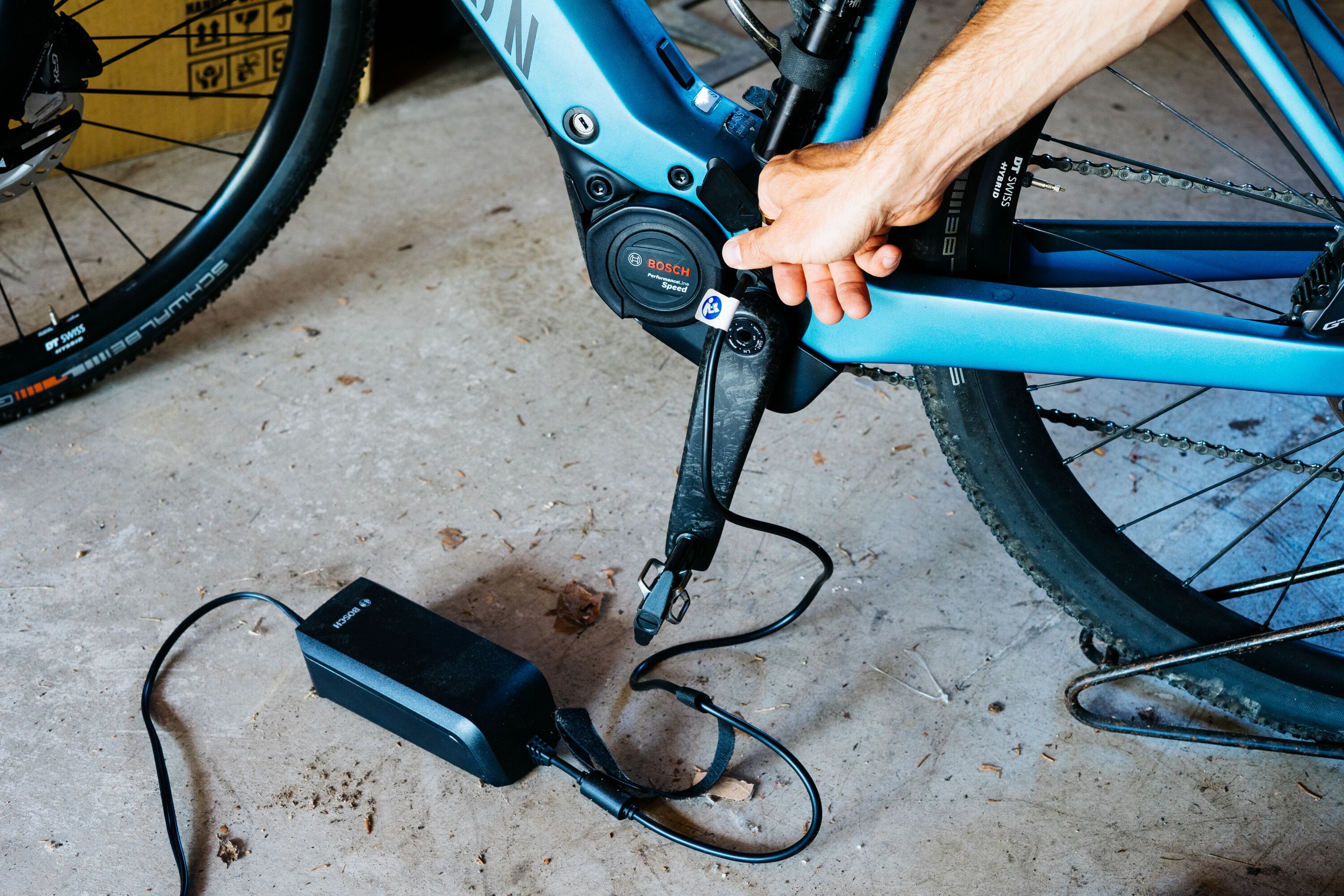 Pay particular attention to tyre pressure on e-bikes to help prevent flats and damaging your tires or wheels. The stiffer casing on e-bike tires helps offset some of the added weight, but if you carry cargo you have to account for that extra mass, too. There’s no set formula for the right pressure.
Pay particular attention to tyre pressure on e-bikes to help prevent flats and damaging your tires or wheels. The stiffer casing on e-bike tires helps offset some of the added weight, but if you carry cargo you have to account for that extra mass, too. There’s no set formula for the right pressure.
Bike shop owner MacKenzie Hardt recommends that heavier bikes specifically to go close to the top of the range listed on the tire sidewall (never over it). Check pressure at least weekly, since all tires slowly leak air over time. “Most of my customers who get a flat on a bike didn’t check the tire,”
Buy E-Bike Replacement Parts
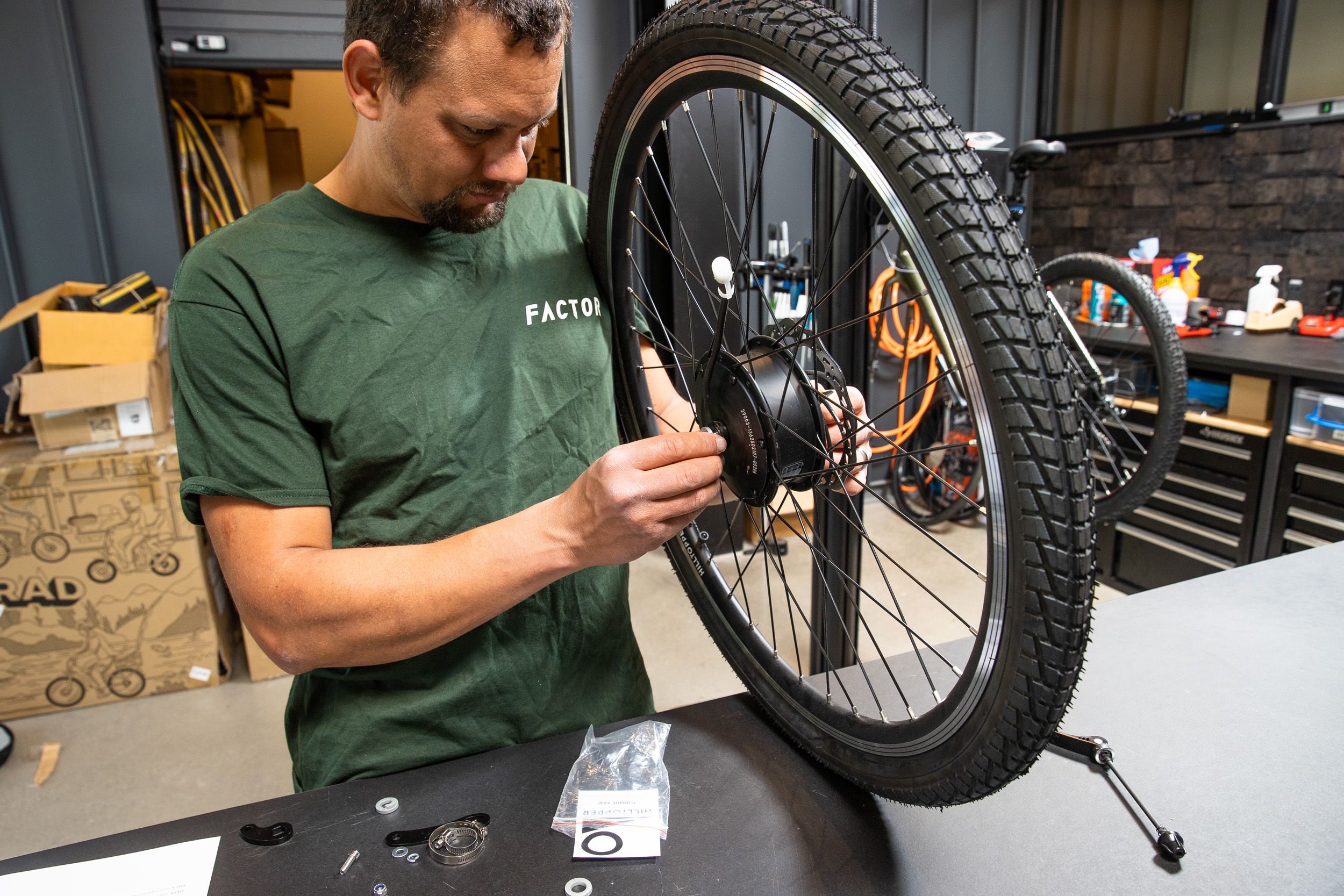 Beyond watching your assist mode, there’s not much you can do to get more life out of consumable bike parts. But you can lengthen replacement intervals by buying e-bike-specific versions of certain ones.
Beyond watching your assist mode, there’s not much you can do to get more life out of consumable bike parts. But you can lengthen replacement intervals by buying e-bike-specific versions of certain ones.
Chains
E-bike-specific chains feature thicker side plates and stronger link pins to handle the increased torque of an e-bike. They’ll wear longer than regular chains and are less prone to failure. Greenwald and Hardt both mentioned KMC’s e-bike chains as a durable, dependable favourite.
Tyres
E-bike tires differ in two ways. First, the rubber compound is typically slightly harder than regular tires, which makes them last longer (the added bike weight helps keep them feeling grippy). Second, the casings are often different, with reinforced, multi-ply construction that handles well under load and better resists flats. Schwalbe and Continental tires are both found on some higher-end utility e-bikes and are great upgrade brands for your first replacement set.
Brake Pads
Not all companies make e-bike-specific pads (Shimano and SRAM, for example, don’t). If you want more durability, try e-bike-specific replacement pads from SwissStop or Kool-Stop, which feature compounds that wear more slowly and manage heat better. When shopping for disc brake pads, make sure you purchase the correct pads for your specific brake model, not only the brake brand. When in doubt, ask your local bike shop.
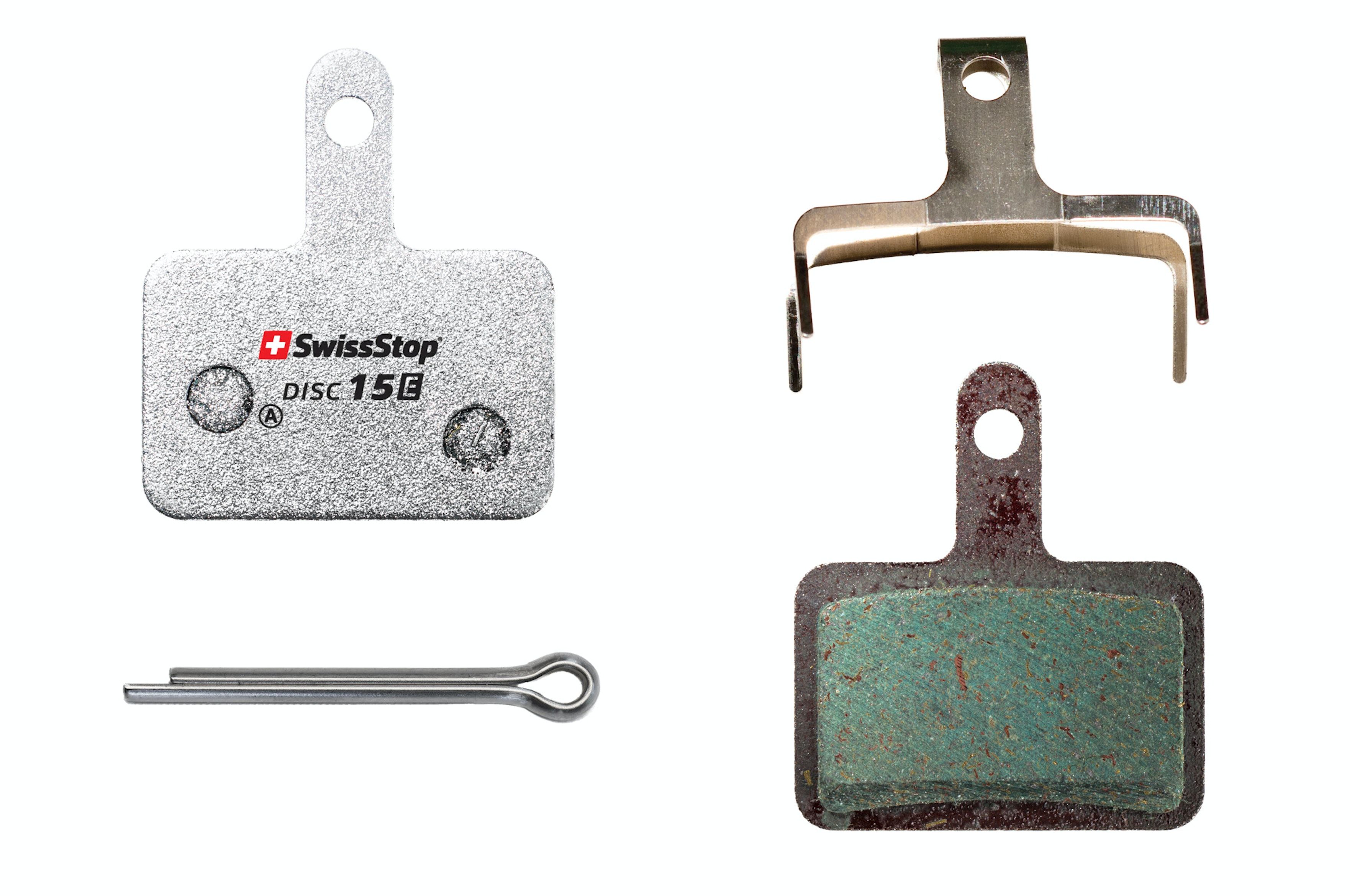 Exactly how often you need maintenance or replacement parts depends on use. “There’s maintenance because an item wore out,” says Greenwald. “And there’s repair because something broke.” Maintenance is always cheaper. Be alert to unusual noises or sensations from your bike. But the best way to stop problems from becoming expensive repairs is to regularly clean your bike, because, Hardt says, that’s your best chance to closely inspect it.
Exactly how often you need maintenance or replacement parts depends on use. “There’s maintenance because an item wore out,” says Greenwald. “And there’s repair because something broke.” Maintenance is always cheaper. Be alert to unusual noises or sensations from your bike. But the best way to stop problems from becoming expensive repairs is to regularly clean your bike, because, Hardt says, that’s your best chance to closely inspect it.
How to Clean an E-Bike
You might already know that it’s not a good idea to spray high-pressure water on a conventional bicycle. That goes double for e-bikes, says Hardt. “There are some pressure washers that say they’re designed for bicycles, but I still steer clear of using them on e-bikes specifically,” he says. For e-bikes with motor systems from name-brand companies like Shimano, Bosch, and Yamaha, Hardt has no problem hosing a bike down gently, because those motors are all well-sealed against the elements. Generally, it’s best to leave the battery in place; the seal between the battery and the cable connector will prevent water from getting in.
But often, Hardt says, he simply uses a rag and a gentle degreaser to go over every part from front to back. “Some old T-shirts and toothbrushes and Clean Green or even dish soap does a lot,” he says. A second wipe with a rag wetted only with water clears off any residue.
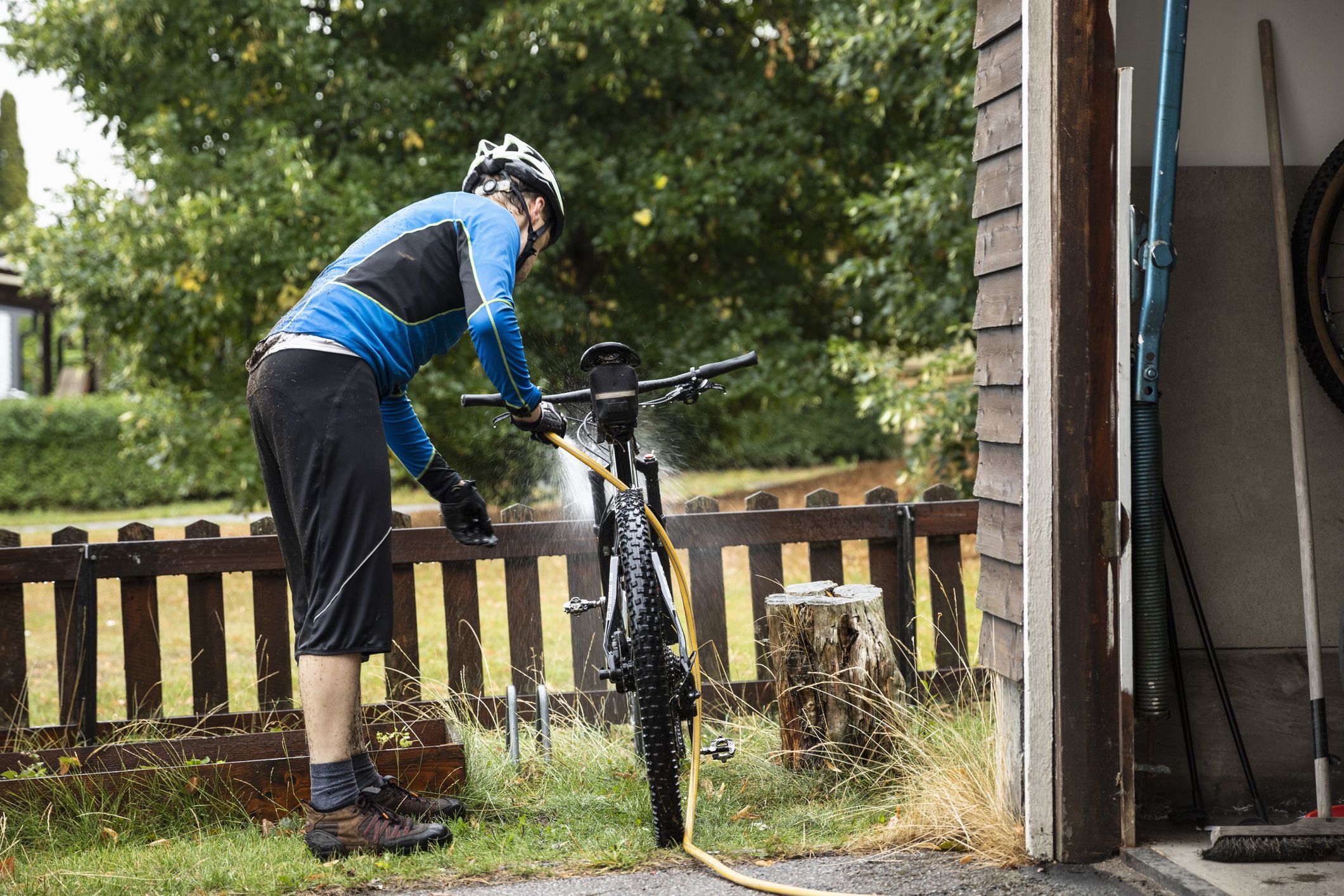 Just like a pedal-only bike, a clean e-bike will have less wear and tear than a dirty one, particularly on the drivetrain, saving you money and hassle. But the process of cleaning the bike, Hardt says, is also an inspection, where he finds worn brake pads, damaged electrical wiring, loose spokes, bubbled frame paint, and other telltale signs of stress.
Just like a pedal-only bike, a clean e-bike will have less wear and tear than a dirty one, particularly on the drivetrain, saving you money and hassle. But the process of cleaning the bike, Hardt says, is also an inspection, where he finds worn brake pads, damaged electrical wiring, loose spokes, bubbled frame paint, and other telltale signs of stress.
Pay close attention to the tires and the motor system’s electrical connections. Bald spots on the tire, casing threads showing, or big cuts or sidewall tears are a sign you need fresh rubber. Loose wires, or wiring that’s fraying or exposed from its housing mean you should take it to a shop.
This is also a good time to check bolts for tightness. Hardt recommends a beam-style torque wrench because they’re affordable, easy, and intuitive to use, and don’t require calibration like click-type torque wrenches. It’s almost impossible to find one with a torque range that spans every bolt on a bike, but Hardt points out Park’s TW-1.2 as an economical option for most parts on a bike. Its torque gauge goes up to 14Nm, perfect for important connections like stems, handlebars, and seatposts.
Finding a Good Repair Shop
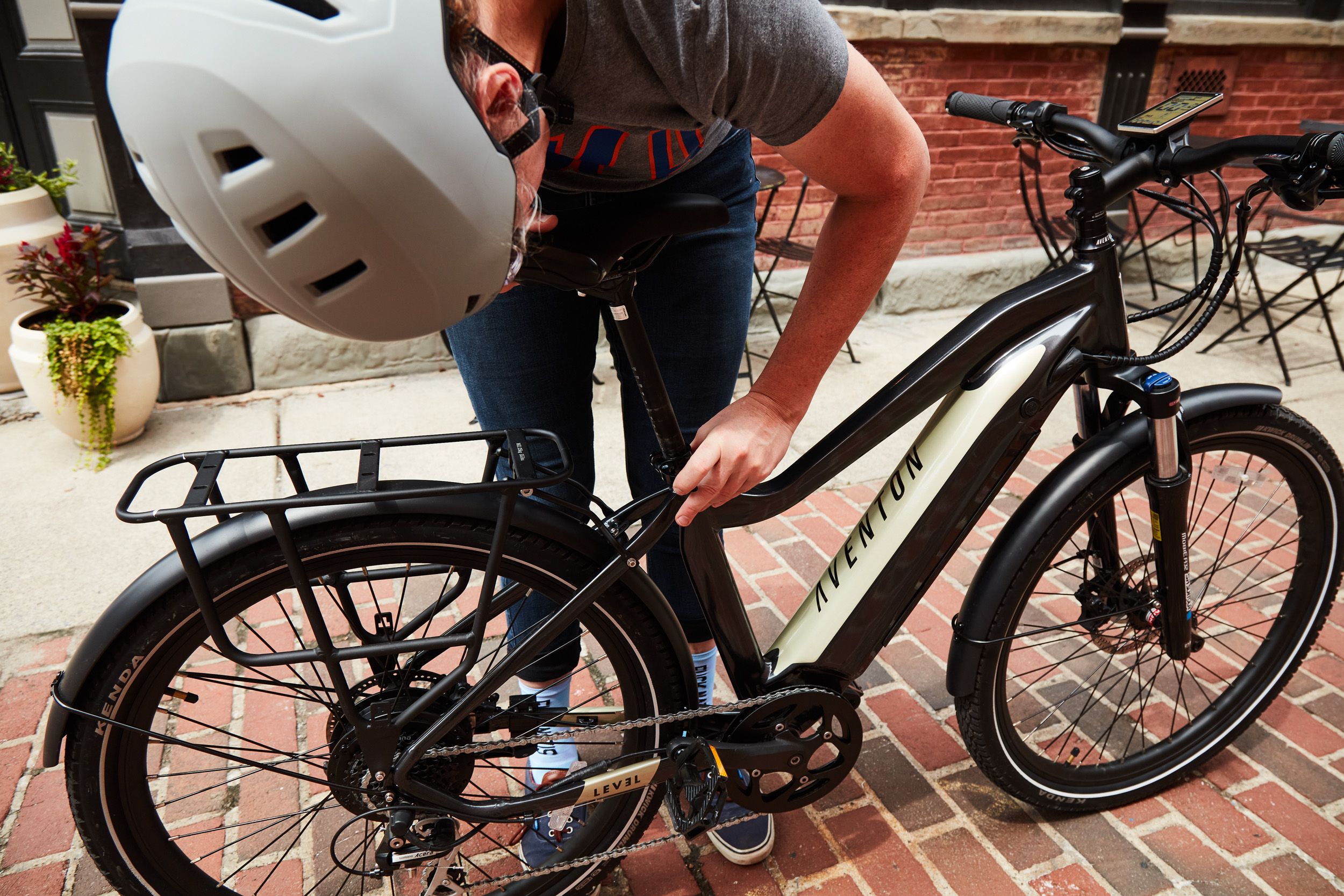 An e-bike is still just a bike, says Hardt, and there’s a lot of maintenance owners can still do on their own. From lubing the chain and airing tires to adjusting shifting and replacing cables (if you’re comfortable with that), many basic e-bike repairs can be done without bike-specific tools or master mechanic skills.
An e-bike is still just a bike, says Hardt, and there’s a lot of maintenance owners can still do on their own. From lubing the chain and airing tires to adjusting shifting and replacing cables (if you’re comfortable with that), many basic e-bike repairs can be done without bike-specific tools or master mechanic skills.
One thing you shouldn’t do, however, is mess with the motor system itself. E-bikes today are a lot like cars, with specialised firmware and intricate internal parts that require specialised tools and knowledge. “Most e-bikes on the market are meant to be diagnosed in a shop by a licensed, insured mechanic with the proper software,” says Hardt. Shops have access to plug-in diagnostic systems that can help them find and fix trouble spots in a motor or battery.
 That means you need to find a trusted shop partner. Obviously, the dealer where you bought your bike is a good start, but if you moved, or it closed or no longer carries that brand, look for an independent bike shop that has Bosch and Shimano maintenance certifications. Both standards mean that mechanics at the shop took specific training to service those systems, and mechanics also need to periodically take refresher courses to re-certify. A shop with certified mechanics is not only qualified to handle warranty issues for that brand of motor; it’s a sign that the shop makes e-bikes a priority and the mechanics have a higher skill level than a shop that services e-bikes infrequently. It should go without saying but: take your bike to a shop that specialises in that kind of riding.
That means you need to find a trusted shop partner. Obviously, the dealer where you bought your bike is a good start, but if you moved, or it closed or no longer carries that brand, look for an independent bike shop that has Bosch and Shimano maintenance certifications. Both standards mean that mechanics at the shop took specific training to service those systems, and mechanics also need to periodically take refresher courses to re-certify. A shop with certified mechanics is not only qualified to handle warranty issues for that brand of motor; it’s a sign that the shop makes e-bikes a priority and the mechanics have a higher skill level than a shop that services e-bikes infrequently. It should go without saying but: take your bike to a shop that specialises in that kind of riding.
You can also ask if the shop carries specific insurance for working on e-bikes. “That’s a sign that they know what they’re doing,” says Hardt. “The owners stand behind their mechanics” and are investing in proper training and certification.
E-bikes are evolving and changing rapidly, which means it’s important for your shop to stay up on the technology. “That relationship between you and the mechanic is really important,” says Hardt. “It should be someone that cares about you and your family and the bike you’re riding.” Find that shop, and you find the people who will help you with the skills, parts, and support you need to keep rolling.
READ MORE ON: bike repairs DIY e-bike maintenance E-bikes



